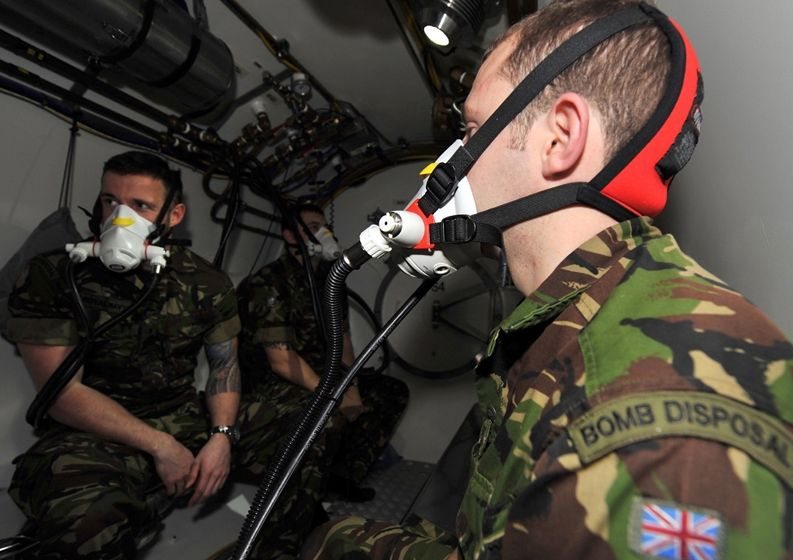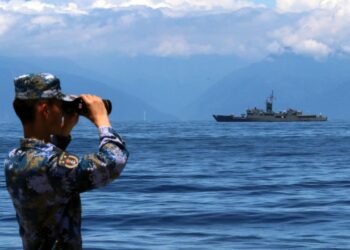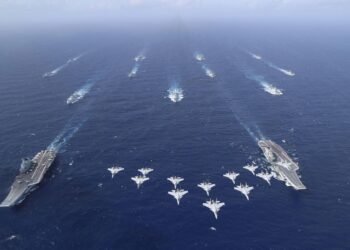Costing £130m and weighing 360 tonnes, the NATO Submarine Rescue System is one of the most sophisticated pieces of equipment in the world. For four days, 70 experts from three countries put it through its paces.
The NATO Submarine Rescue System (NSRS) is stored and maintained in a giant purpose-built hangar at HM Naval Base Clyde. It is so sophisticated that it can dive to 2,000 feet (610m) – deep enough to operate anywhere around the world’s continental shelves.
Owned by Britain, France and Norway, it is always on standby – and happily, so far, it has never been used.
During the test, 25 volunteers were entombed in the NSRS’s two giant decompression chambers for 18 hours to see how they would react to the confines and changes in atmosphere and pressure that they would experience during a rescue from a stricken sub.
The NSRS can be on the move within three hours – on 27 lorries. Ships all around the world are designed to take the loading platform, decompression chambers and rescue submersible – if there was an emergency the nearest ship would be alerted.
The whole loading platform is bolted onto the ship’s deck and the system’s submersible – straight out of a sci-fi movie with its glass-fronted nose – is ready to go, lowered into the water by the giant cranes that are part of the kit.
If a submarine’s hull is breached it is automatically sealed and the rest of the hull becomes pressurized. The NSRS’s decompression chambers, which can take up to 35 people at a time, are set up and the rescue submersible transfers survivors straight into them. If the hull of the stricken submarine is still intact, the rescue submersible can do the job on its own, bringing up 15 survivors at a time.
Timing is important because it can take up to four days to get someone fully decompressed. So the rescuers need to get as many people out of the submarine as they can and as quickly as possible.
The decompression chambers are staffed by professionally trained divers and nurses who can tend to the injured, clean any who are contaminated, and generally run things until it is safe to open the doors to the outside world.
Lieutenant Commander Kevin Stockton, who runs HM Naval Base Clyde’s Northern Diving Group, said:
“It is a quite brilliant stand-alone system designed simply to save lives.
“Speed is essential in getting to a stricken submarine and the fact that we can be on the move in three hours with 360 tonnes of equipment is impressive in its own right.
“Although it is essentially a NATO asset, the brotherhood of the submariner is such that I am sure we would respond to a request from any government which had a submarine in distress.
“The brutal reality is that if a submarine were to go down in really deep water there is nothing that anyone could do because the pressures would become too great for anything to survive.”
The divers, doctors, nurses and specialist operators from Britain, France and Norway operated as a seamless team for four days.
The exercise, called Massivex, ran the course of an actual rescue timeline, from initial alert response to 18 hours of simulated decompression time.










